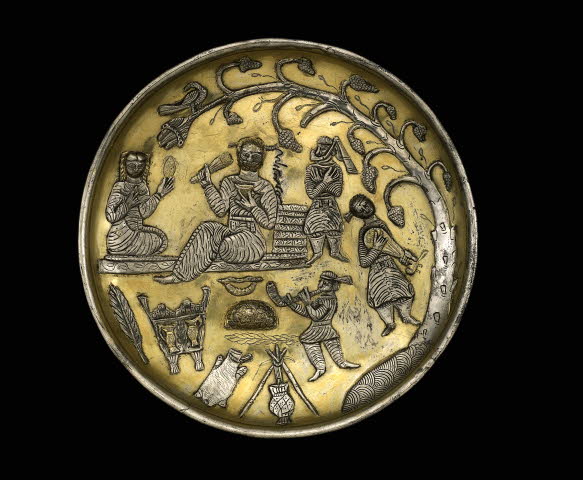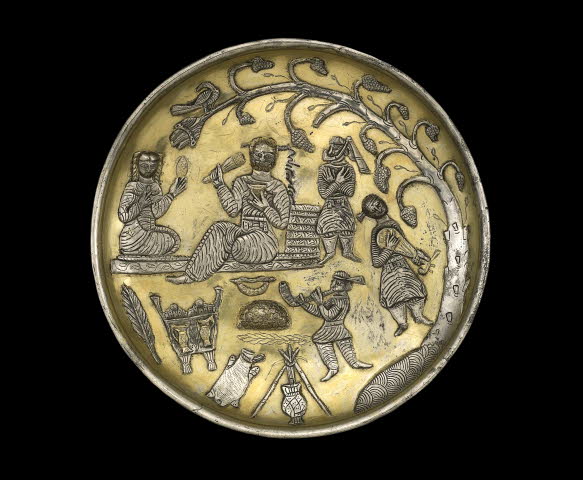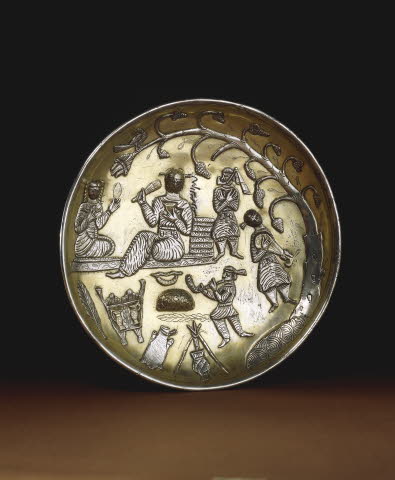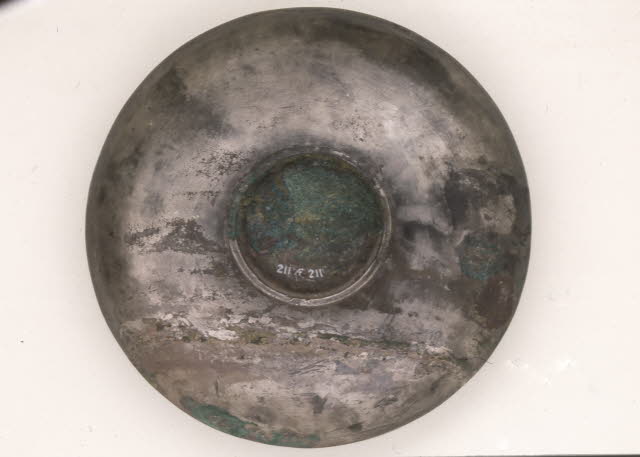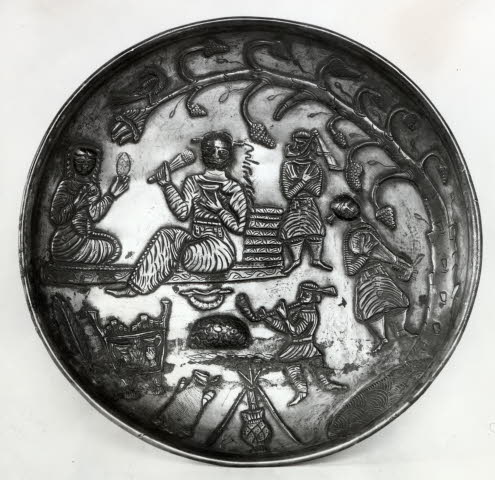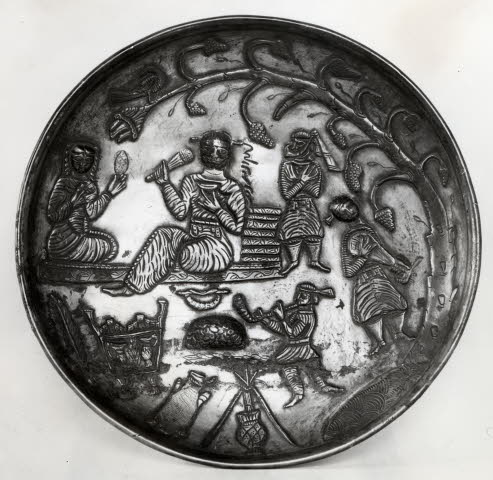Dish
BackDescription:
Dish, with foot-rim. Made of gilded silver and decorated on the interior with relief decoration of a ruler in Sasanian costume reclining on a wheeled couch, surrounded by attendants, musicians and items essential for an outdoor banquet: a vine hung with ripe grapes, a water-bottle made from the skin of a whole animal, wine jugs in a cooler and a pot suspended over a fire.
Object type: | dish |
Museum number: | 1963,1210.3 |
Culture/period: | Early Islamic |
Date: | 7thC-8thC |
Production place: | Made in: Tabaristan |
Findspot: | Excavated/Findspot: Tabaristan |
Materials: | silver, gold |
Technique: | gilded |
Dimensions: | Diameter: 19.70 cm Height: 4.00 cm |
Inscriptions: | Inscription details: inscription in Persian in Pahlavi (Middle Persian) script Inscription quoted: Inscription translation: Anushzad |
Location: | 23 |
Exhibition history: | Exhibited: 1998 9 Feb-3 May, India, Mumbai, Sir Caswasjee Jahangir Hall, The Enduring Image 1997 13 Oct-1998 5 Jan, India, New Delhi, National Museum, The Enduring Image |
Subjects: | musician, feast/banquet, ruler |
Acquisition names: | Bequeathed by: Sir Augustus Wollaston Franks |
Acquisition date: | 1897 |
Curator's comments:
This gilded silver dish was made in Tabaristan, a province of northern Iran not fully under Islamic rule until the 800s. Many silver vessels such as this circulated at the courts of the caliphs of Damascus and Baghdad, where their beauty was celebrated by Arab poets. David Bivar read the inscription as Khorezmian and giving the weight of the bowl.; During the first century of Islam, vessels reflected earlier cultural traditions of the area in which they were made. Tabaristan was famous for silver vessels decorated in relief with scenes derived from the iconography of the Sasanian Empire. Hundreds of vessels were sent to the Caliphal court at Damascus and then to Baghdad where their beauty was celebrated in contemporary poetry. (Blurton, 1997)
